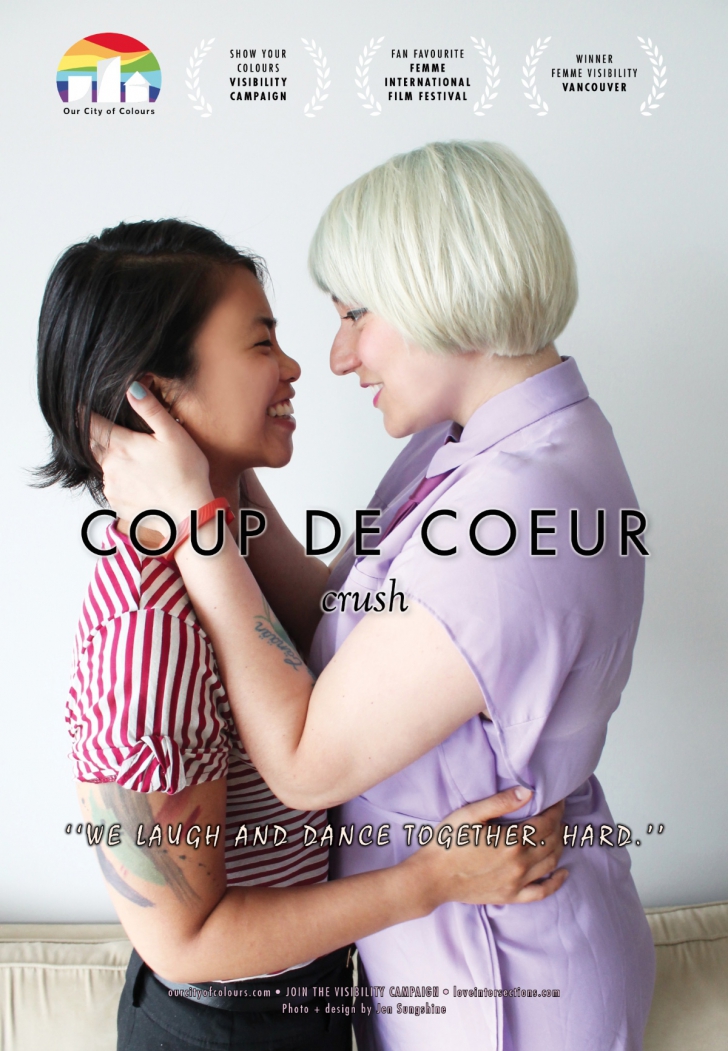
(“Every single participant in these posters was like, ‘I don’t see myself accurately represented in the media, especially because I’m queer, or trans, or indigenous, or a person of colour who happens to be queer,’” says Jen Sung, who designed Our City of Colours’ 2015 posters, including the one above./Our City of Colours)
It’s been four years since Our City of Colours launched its first poster campaign to inject positive images of queer people of colour into Vancouver’s cultural landscape. Now, the group’s latest campaign is trying something a little different.
Launched Oct 30, 2015, the new campaign borrows from classic movie-poster motifs. At first glance, the posters look like they’re promoting the latest slasher or rom-com: one shows a hand reaching out of the dark to cover someone’s mouth; another shows two people staring lovingly into each other’s eyes. But what they’re really promoting is visibility.
“Every single participant in these posters was like, ‘I don’t see myself accurately represented in the media, especially because I’m queer, or trans, or indigenous, or a person of colour who happens to be queer,’” says Our City of Colours board member Jen Sung, who also designed the new posters. “So it was a real opportunity to tell their own stories.”
Our City of Colours launched its first poster campaign in November 2011, with six posters featuring models from the Chinese, Iranian and Punjabi communities. Each poster included text written in English and in the models’ respective languages.
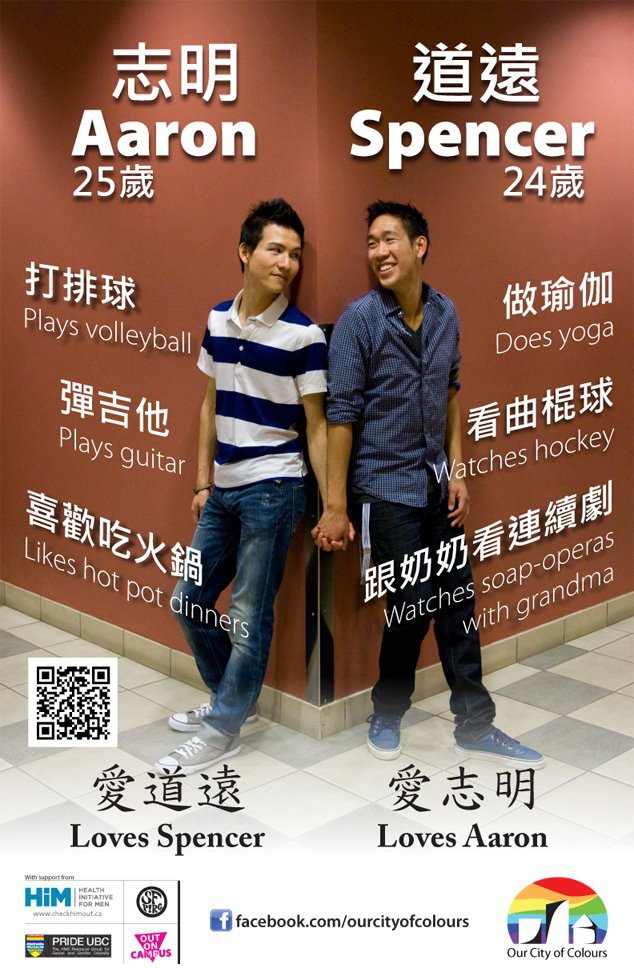
(Poster from Our City of Colours’ first campaign in 2011./Our City of Colours)
Another poster campaign followed a year later, featuring posters in Tagalog, Spanish, Vietnamese, French and Russian.
“Our posters are aimed at those who still believe that homosexuality and queerness is a Western issue,” Our City of Colours co-founder Darren Ho told Daily Xtra in 2012. “But also, our posters are aimed to add to the insufficient amount of positive and friendly images which reflect our cultural differences within queer communities.”
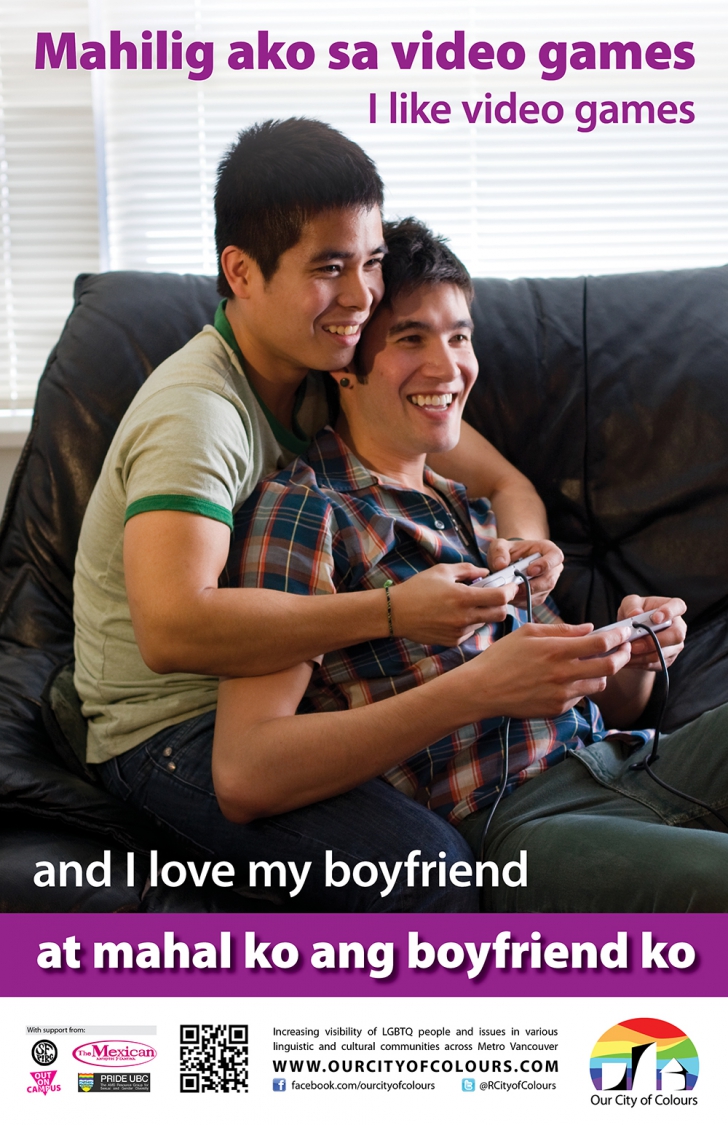
(Poster from Our City of Colours’ 2012 campaign./Our City of Colours)
“Our goal to increase the visibility of LGBTQ people in various linguistic and cultural communities will always be relevant as long as homosexuality continues to be a taboo subject in some communities,” Ho continued, “and as long as queer people from these communities continue to be misrepresented and under-represented in the mainstream media.”
Sung says she wanted to try a different approach for this year’s campaign. “We’ve already depicted queer and trans people of colour,” she says. “Let’s go with something more creative, let’s go deeper in the conversation — let’s talk about the nuances of popular culture and media.”
The 2015 posters propose a range of themes — homophobia, racism, transphobia, ableism and family dynamics, to name a few — and cast their subjects as the hero of their own story.
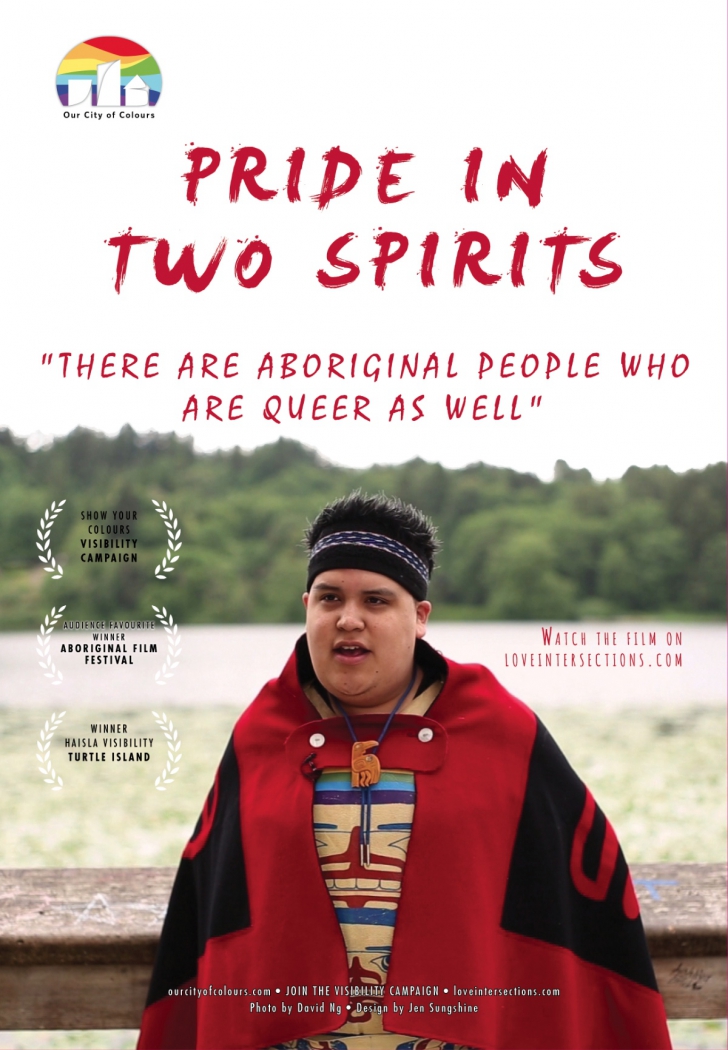
(Poster from Our City of Colours’ 2015 campaign./Our City of Colours)
The posters will give people an opportunity to see themself in the same sort of roles that white, straight people get everyday, Sung says, while highlighting the problem of underrepresentation.
The posters aim to challenge depictions of queer people in the media that Sung says are often “not the greatest.”
“In the ’90s when I was struggling with my sexuality and coming out, I was looking for movies and I realized pretty soon, ‘oh my god, everyone dies in the end, is that my fate?’” she says.
She hopes the eye-catching posters will not only encourage people to consider the role of queer people of colour in popular media, but will spur people to become involved with Our City of Colours.
“We would love to have more members to help direct our vision, and have more creative input,” she says.
Sung says Our City of Colours’ previous poster campaigns have been seen throughout BC, as schools boards continue to request the posters.
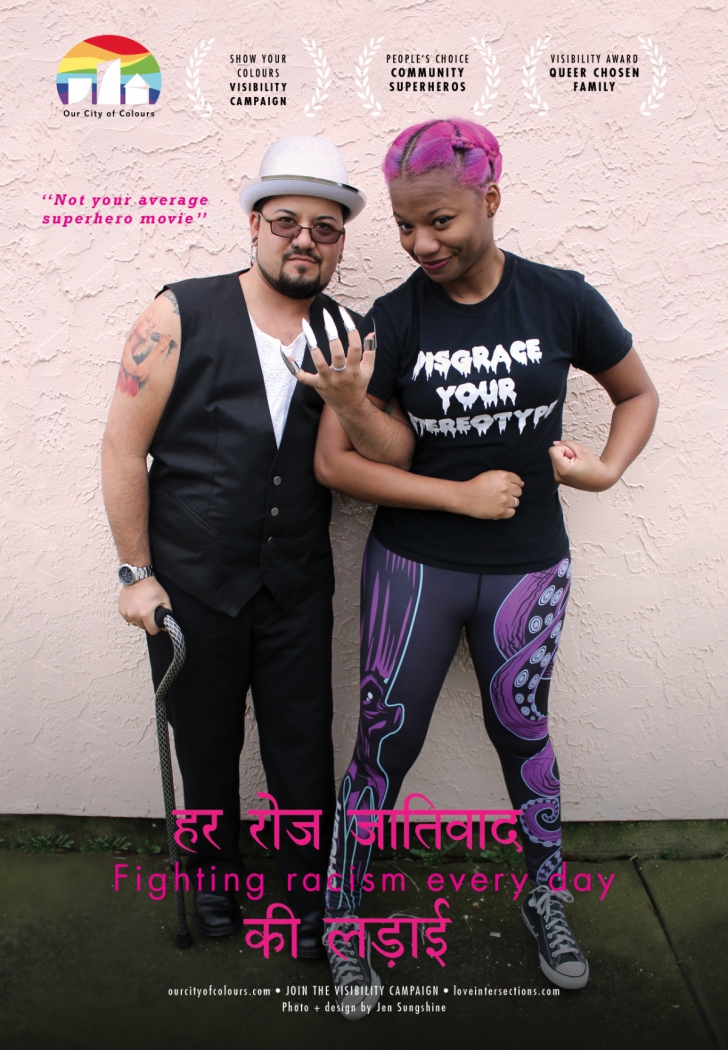
(Poster from Our City of Colours’ 2015 campaign./Our City of Colours)
This campaign also aims to add a video dimension to each poster, in conjunction with Love Intersections, which Sung co-founded in 2014 to challenge and explore the intersections of race, sexuality and identity, through art and love.
The goal is to create a short film or clip to accompany each poster to further expand the subject’s story.
“I really wanted to flip the lens around and flip the camera around to say, ‘we can have power,’” Sung says. “We want power and we can have it — let’s tell our own stories.”
Look for the posters in bus-shelter ads around Vancouver this fall.
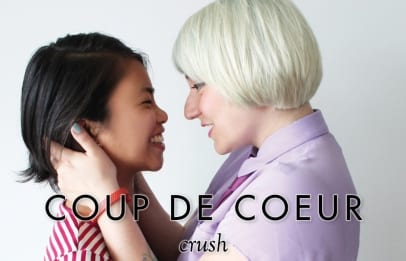
 Why you can trust Xtra
Why you can trust Xtra


